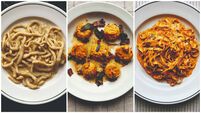Darina Allen: How to make my one pot bacon, cabbage and scallion champ pie
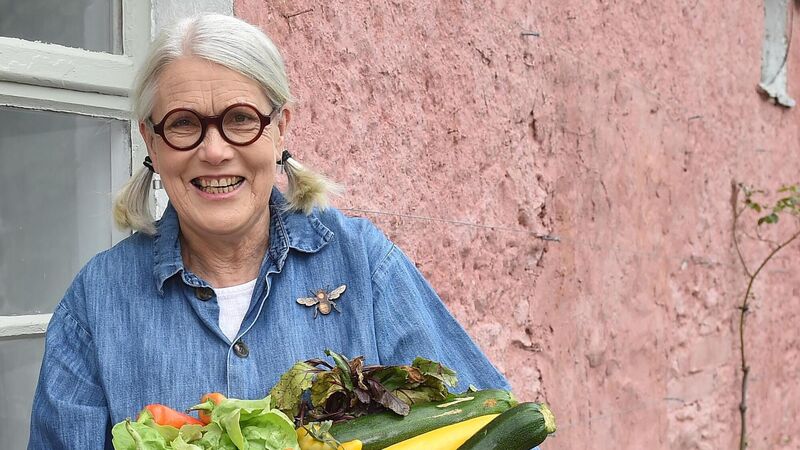
Darina Allen in the gardens of the Ballymaloe Cookery School. Picture: Dan Linehan
Empty shelves in the vegetable and fruit section of our supermarkets in recent weeks has sent a quiver of panic through the retail trade. Shoppers are having to become accustomed to gaps on the shelves.
Hotels, restaurants, hospitals, universities around the country can also make a dramatic contribution by linking in with local farmers and food producers to commission them to grow.
Bacon, Cabbage and Scallion Champ Pie
Who doesn’t love bacon and cabbage? This version is a traditional Irish meal, all in one pot.
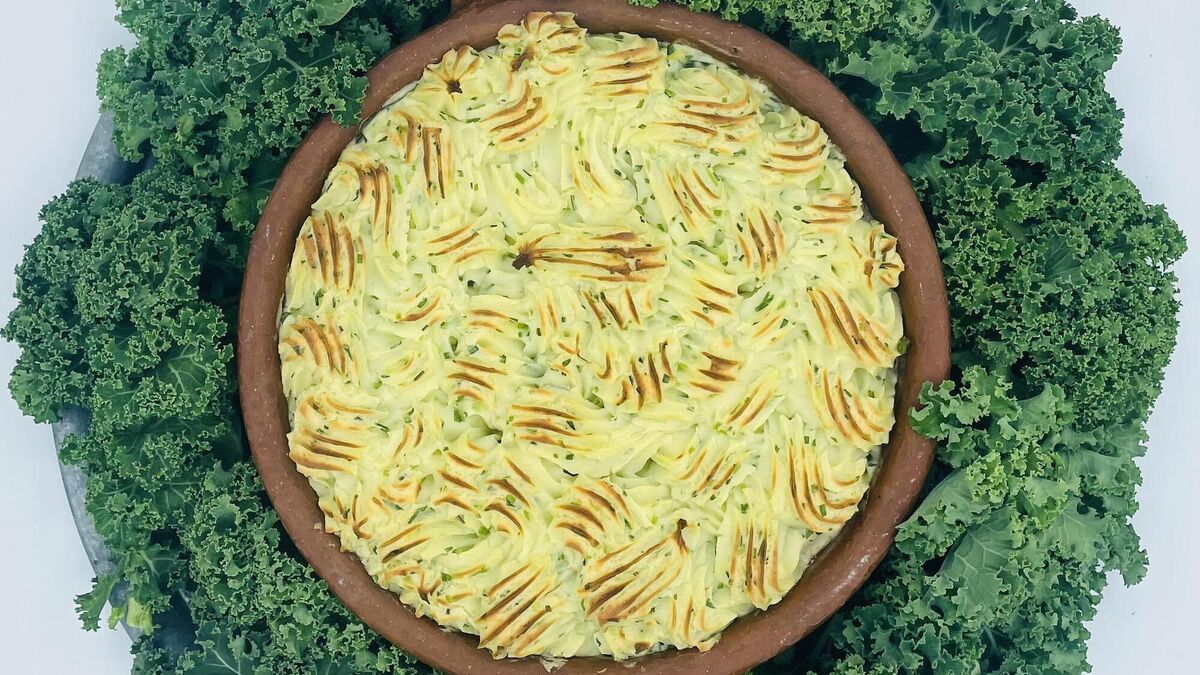
Servings
10Preparation Time
30 minsCooking Time
1 hours 20 minsTotal Time
1 hours 50 minsCourse
MainCuisine
IrishIngredients
650g (1lb 6oz) bacon (collar or oyster cut, rind on) or cooked ham
Parsley Sauce (recipe available on ieFood)
1 teaspoon English mustard
2 tablespoons cream
450g (1lb) Savoy or Hispi cabbage, cored and sliced across the grain
450g (1lb) Scallion Champ (recipe available on ieFood)
1 x 3 pint terracotta dish (25cm (10 inch) width x 2.5cm (1 inch) depth)
Method
Cover the uncooked bacon in cold water, bring to the boil uncovered. Taste, if the liquid appears very salty discard and re-cover with hot water. Bring back to the boil, cover, and cook for 40-45 minutes approximately or until the rind will peel off easily. Remove to a plate, add the chopped cabbage to the bacon water and continue to cook until the cabbage is tender, about 10-15 minutes depending on the variety. Drain well.
Meanwhile, make the Parsley Sauce (see recipe on ieFood).
Add mustard and cream. Taste and correct seasoning.
Make the Scallion Champ (see recipe on ieFood).
Remove the bacon rind, if necessary, Cut the bacon into scant 2cm (3/4 inch) chunks. Add the cooked cabbage and mix gently.
Bring the Parsley sauce back to the boil. Fold in the bacon and cabbage, add a little bacon cooking water if necessary. Taste, correct the seasoning.
Fill into one or several pie dishes.
Pipe a generous layer of Scallion Champ on top.
Preheat the oven to 180°C/350°F/Gas Mark 4, cook for 10-15 minutes until bubbling and beginning to colour on top. Serve immediately with a little extra mustard on the side.
Cauliflower or Broccoli Salad
Cauliflower or broccoli salad is not an obvious choice, but it is surprisingly delicious. The secret as is the case with many salads is to dip the florets in a good dressing.
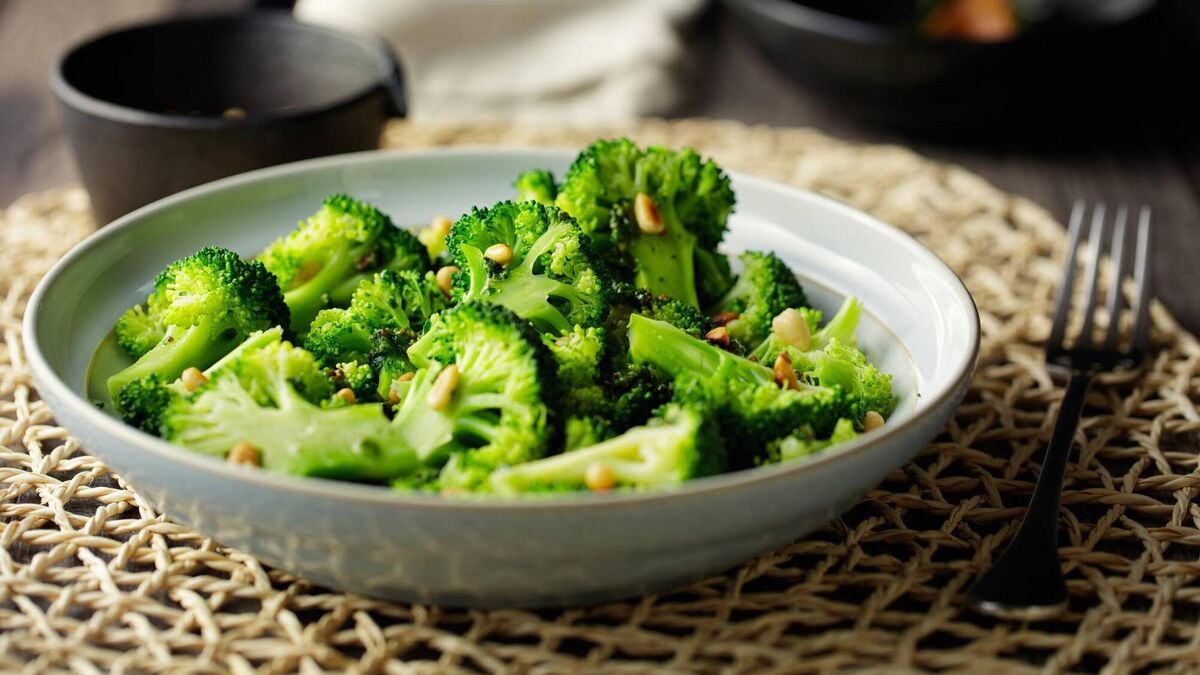
Servings
6Preparation Time
5 minsCooking Time
9 minsTotal Time
14 minsCourse
SideCuisine
EuropeanIngredients
1 small head cauliflower or broccoli
110ml (4fl oz) Ballymaloe French Dressing (recipe available on ieFood)
Method
Ideally this should be made with slightly shot heads at the end of season. Take a head with the leaves on, trim off the damaged ones. Wash and shred the remaining leaves and stalk, split the cauliflower into small florets so it will cook evenly.
Take a saucepan that fits the cauliflower exactly and boil 1 inch of water in it. Add a little salt, put in the shredded leaves and sit the cauliflower on top, stems down and cover closely. Control heat so that it does not boil dry. Remove from the pot when the stalks are barely tender. Divide into florets. dip each into French dressing while they are still warm and arrange like a wheel on a round plate. Build up layer upon layer to reform the cauliflower head. This looks good and tastes delicious on a cold buffet.
Note: Green broccoli (Calabreze) or purple/white sprouting broccoli can be cooked this way also and a mixture of all three looks and tastes wonderful.
Ballymaloe French Dressing
A quick and versatile salad dressing.
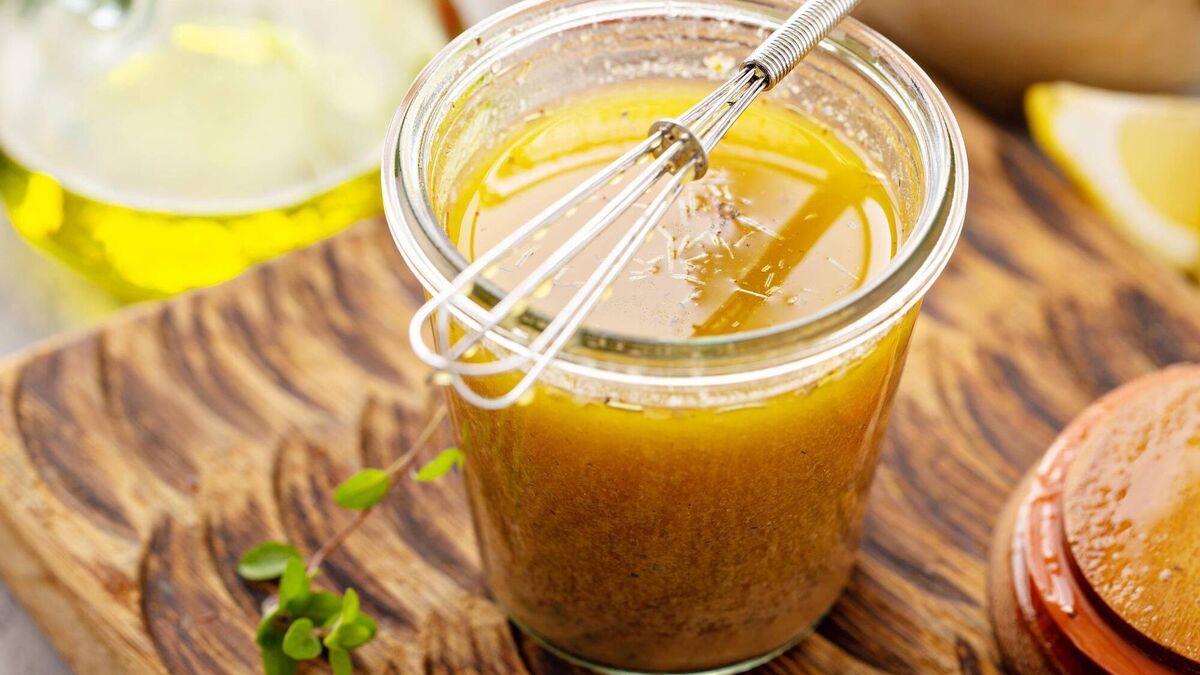
Preparation Time
10 minsCooking Time
1 minsTotal Time
11 minsCourse
MainCuisine
FrenchIngredients
125ml (4 1/2fl oz) extra virgin olive oil
2 tablespoons balsamic vinegar
1 teaspoon honey
1 garlic clove, crushed
1/2 teaspoon Dijon mustard
Maldon sea salt and freshly ground
black pepper
Method
- Put all the ingredients into a small bowl or jam jar. Whisk until the dressing has emulsified. Preferably use fresh but it will keep in the fridge for a couple of days. Whisk to emulsify before using.
Rhubarb and Custard Meringue Tart
You’ll get lots of compliments for this celebration, rhubarb tart it’s even delicious without the meringue on top...
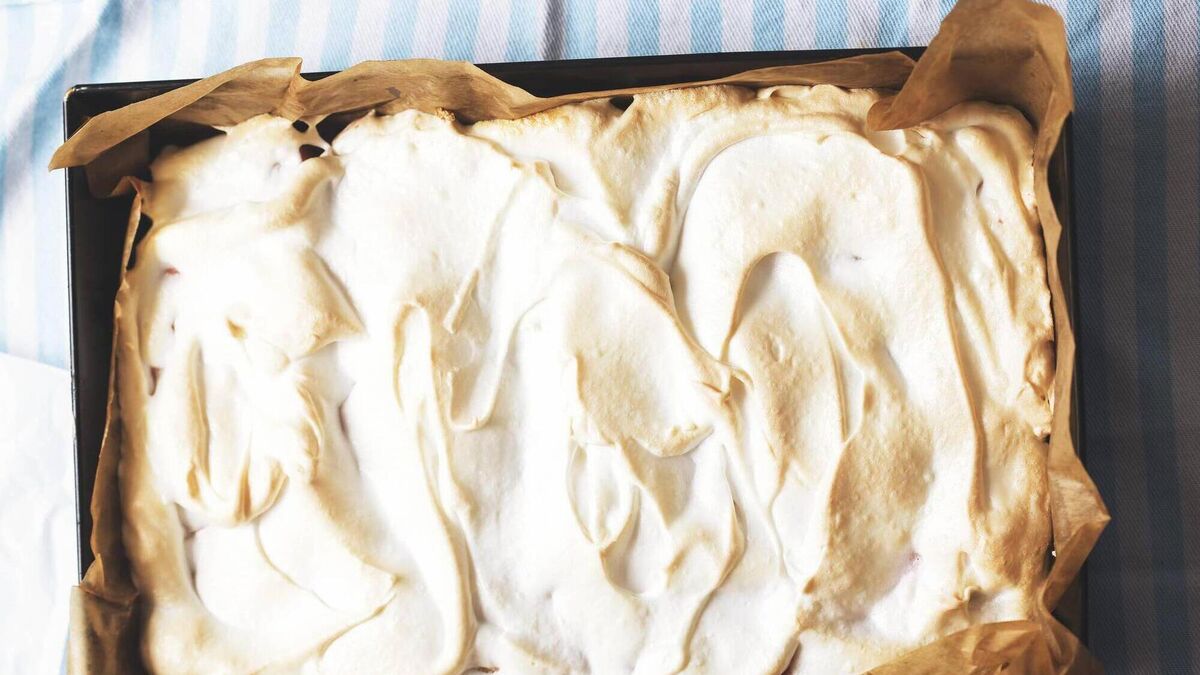
Servings
10Preparation Time
15 minsCooking Time
1 hours 5 minsTotal Time
1 hours 20 minsCourse
DessertCuisine
FrenchIngredients
300g (10oz) sweet shortcrust pastry, chilled, made from:
200g (7oz) white flour
pinch of salt
100g (3 1/2oz) butter
1 egg yolk (keep white aside for meringue)
2-3 tablespoons cold water approx.
Filling
1 kg (2 1/4lb) red rhubarb, cut into 3cm (1 1/4 inch) pieces
3 egg yolks
120g (scant 4 1/2oz) sugar
1 teaspoon vanilla extract
2 tablespoons plain flour
Meringue
3 egg whites
175g (6oz) caster sugar
1 x 26cm (10 1/2 inch) tin, preferably with a pop-up base
Method
Preheat the oven to 200°C/400°F/Gas Mark 6.
First make the pastry.
Sieve the flour with the salt, cut the butter into cubes and rub into the flour with the fingertips. Keep everything as cool as possible; if the fat is allowed to melt the finished pastry may be tough. When the mixture looks like coarse breadcrumbs, stop.
Whisk the egg yolk and add the water. Take a fork or knife, (whichever you feel most comfortable with) and add just enough liquid to bring the pastry together, then discard the fork and collect it into a ball with your hands, this way you can judge more accurately if you need a few more drops of liquid. Although rather damp pastry is easier to handle and roll out, the resulting crust can be tough and may well shrink out of shape as the water evaporates in the oven. The drier and more difficult-to-handle pastry will give a crisper shorter crust.
Cover and chill for half an hour, if possible, this will make it less elastic and easier to roll out. Roll out the pastry and line the tin. Line with greaseproof paper and fill with baking beans. Bake ‘blind’ for 20 minutes approx. until the pastry is three-quarters cooked, remove from the oven. Remove the baking beans, brush the base with beaten egg wash and place back in the oven for another 5 minutes.
Slice the rhubarb and spread over the pastry base.
Whisk together the egg yolks, sugar, vanilla extract and flour and spread over the rhubarb. Bake in a preheated oven for 10 minutes, this will start the rhubarb cooking.
Meanwhile, whisk the egg whites until fluffy. As they stiffen, trickle in the caster sugar and continue to whisk until stiff.
Remove the tart from the oven and pipe or spread the meringue on top. Reduce the heat to 180°C/350°F/Gas Mark 4, return to the oven. Bake for a further 25 minutes.
Cool on a wire rack and serve with softly whipped cream.
Fermentation is and has always been an important part of a healthy diet. We have lost many traditional fermented foods that would have been part of our diet. Learn how to put these foods back into your family’s diet.
In this afternoon class, Penny and Maria will show you how to make Sauerkraut, Kombucha and Water Kefir.
You will leave with a jar of starter cultures for water kefir, kombucha scoby and your own jar of sauerkraut. Penny and Maria will demystify and remove the fear from making your fermented foods in your own kitchen at home.
, see www.cookingisfun.ie
Returning for the first time since pre-Covid, the Good Food Ireland Awards will take place on Monday 17th April at The K Club, County Kildare.
The lunch will be opened by guest of honour, Simon Coveney T.D., Minister for Enterprise, Trade and Employment, and attended by some 300 guests including business owners, Irish and international chefs, buyers, food and drink writers, media and industry leaders.
The awards are unique in their cross-sector approach and core criteria around commitment to local Irish produce. They aim to enhance linkages between agriculture and tourism and present significant opportunities for stimulating local production, retaining tourism earnings in the local area, and improving the distribution of economic benefits of tourism to the four corners of the island.
– see www.goodfoodireland.ie





